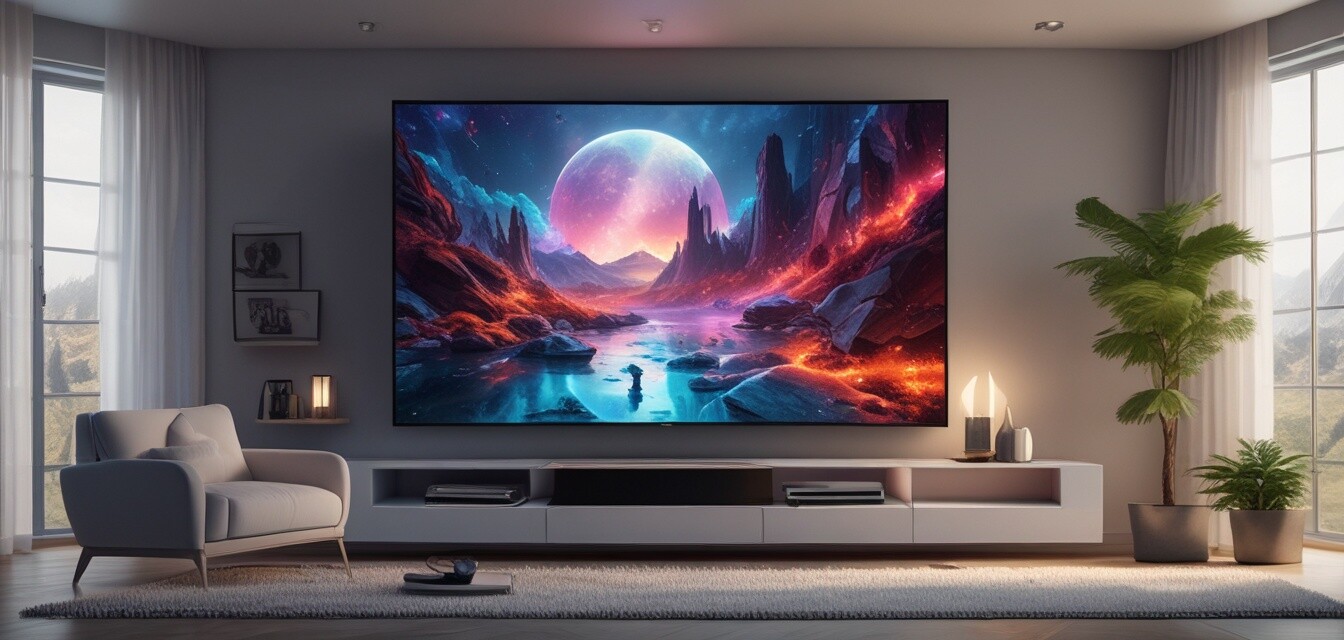
The Evolution of Smart TVs: Features That Benefit Gamers
Key Takeaways
- The rise of smart TVs is improving the gaming experience.
- Features like low input lag and high refresh rates are essential.
- Technologies like VRR and HDMI 2.1 are game-changers for gamers.
- Understanding specifications helps in making informed buying decisions.
The world of smart televisions has evolved dramatically over recent years, especially in the gaming sector. As technology progresses, gamers are offered more features that enhance their gaming experience. By 2025, it’s crucial to understand which features to look for when making your next smart TV purchase. In this article, we will explore the key features of smart TVs that benefit gamers today and in the near future.
Understanding Smart TV Features for Gaming
Smart TVs are packed with features designed to enhance entertainment and gaming. Knowing what these features entail and their impact can help you improve your gaming set-up significantly. Here are some essential features that every gamer should consider:
| Feature | Benefits |
|---|---|
| High Refresh Rate | Provides smoother gameplay and reduces motion blur during fast-action scenes. |
| Low Input Lag | Ensures quick response times between your controller and screen, critical for competitive gaming. |
| Variable Refresh Rate (VRR) | Synchronizes the refresh rate of your TV with the frame rate of your console, minimizing screen tearing. |
| HDR Support | Offers a wider range of colors and greater contrast, enhancing visual details in games. |
| Smart Features | Access to apps and online gaming services directly on your TV without needing extra hardware. |
Current Trends in Smart TVs
As gaming continues to evolve, so do the capabilities of smart TVs to meet those demands. Here are the two main trends to expect as we approach 2025:
1. 8K Resolution
With the advent of 8K gaming consoles, 8K resolution smart TVs are becoming more common. This technology provides stunning visuals and is a game-changer for gamers looking for the highest clarity and realism in their gameplay.
2. Enhanced Connectivity
New HDMI standards such as HDMI 2.1 are being integrated into smart TVs, allowing for better bandwidth which supports higher resolutions and refresh rates. This upgrade is essential for those who game at a high level and need the fastest possible connection.
Choosing the Right Smart TV for Gaming
Selecting the most suitable smart TV can be overwhelming, given the numerous features available. Here’s what to consider in your search:
Beginner’s Tips for Buying a Gaming-Smart TV
- Look for minimal input lag, ideally under 20 milliseconds.
- Prioritize models with high refresh rates, preferably 120Hz or higher.
- Ensure the TV supports the latest HDMI standards for the best connectivity.
- Research and compare models with specific gaming features on pages like Buying Guides.
- Consider the type of display that suits your gaming needs, such as OLED or LED for color accuracy and performance.
The Future of Smart TVs in Gaming
As manufacturers continue to innovate, we can expect even more advanced features designed explicitly for gamers, focusing on performance, graphics, and overall experience. Staying informed about these developments is essential to keep up with the ever-changing landscape.
Conclusion
The evolution of smart TVs is steering the gaming industry towards a more immersive and engaging experience. By understanding the features that enhance gaming, you can make informed decisions that will significantly improve your setup. Keep an eye on upcoming innovations leading into 2025 and beyond, as these could be the game-changers for your home gaming experience.
Pros
- Enhanced gaming experience with quick response times.
- Variety of features catering specifically to gamers.
- Improved picture quality and performance standards.
Cons
- Higher initial investment for advanced technology.
- Consumer confusion due to overwhelming features and specifications.
- Some technologies may become obsolete quickly as new standards arise.
